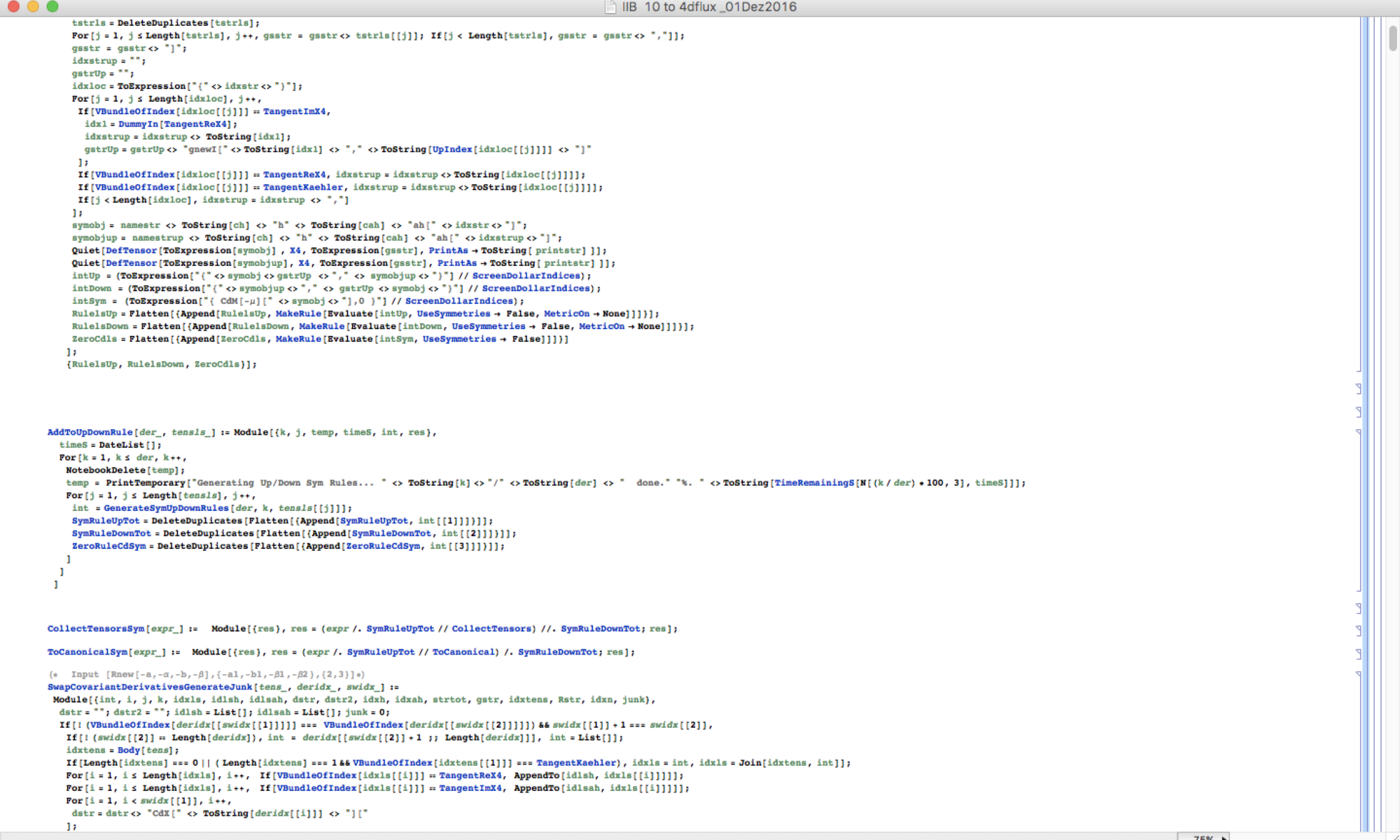Machine Learning – Time Series Forecasting
My recent advances lie in the filed of machine learning in time series forecasting, see here .
In this work we propose a novel approach to utilize convolutional neural networks for time series forecasting. We empirically compare this strategy to convolutional LSTM’s and LSTM’s on their performance on the sequential MNIST and the JSB chorals dataset, respectively. We conclude that our proposed temporally folded convolutional neural networks (TFC’s) may outperform the conventional recurrent strategies.
The Tensor Calculus Package
The XTensor (xAct) package is an Algebra package for abstract tensor computations in arbitrary dimensions.
The XArus package (currently non-publicly available) was developed independently during the last years, and extends the XTensor package to be applicable on complex manifolds of arbitrary even dimension.
Furthermore, the code allows for non-trivially manipulations of higher-derivative Lagrangians and E.O.M’s.
One of the most powerful segments is the possibility of generating all Shouten identities and total derivative identities of a given set of higher-derivative operators, as well as Bianchi identities when gravity is involved. This allows to perform non-trivial manipulations of the action. As those analytical identities needed to answer questions relevant in our research can easily grow in the order of thousands we heavily rely on the support of XArus.
Most prominently the package is thus ideal to perform compactifications of higher-derivative supergravity theories relevant in string theory.
Machine Learning – Gravitational Lensing.
Picture deep learning algorithms (AI) are ideal for the search for gravitational lenses, however have been rarely implemented in this context so far. Instead this challenging tasks are mostly performed by conventional algorithms. When a massive object like a galaxy is covering another galaxy in the line of view light bends around the lensing galaxy and becomes thus visible to us. The goal is to try to outsmart conventional algorithms with deep learning image recognition analysis to find many more gravitational lenses in observational images of our universe within the HSC data of the Subaru telescope which have remained undiscovered so far.
Convolutional Neural Networks have proven very effective in picture recognition and analysis. To train a custom designed network we need to simulate gravitational lenses.


